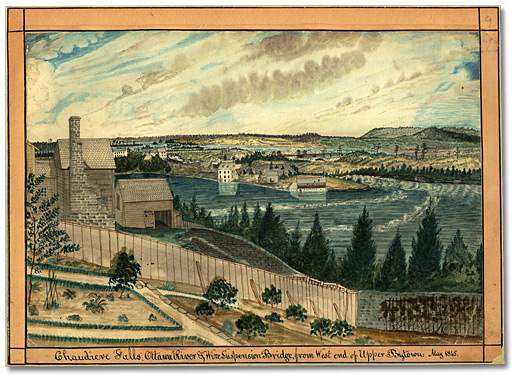
Why did Thomas Burrowes paint? He was not a military engineer, and it is unlikely that he had orders to produce the paintings. Certainly, the drawings remained in his hands, rather than being passed on as part of a report. Burrowes probably pursued art as hobby. In doing so, however, he emulated the officers he worked with who, unlike him, had been trained in topographical painting.
Yet Burrowes’s work is unlike theirs and unlike the polished works produced by most tourists travelling the Rideau at this time. Burrowes was more interested in the canal-building process than in the landscape, and he captured many details of construction. In some cases, he painted the same scene repeatedly over the years. Just as importantly, however, he was interested in life as it was lived. Though his works hardly brim with people, they include more humanity than most paintings of the era, along with houses and animals and tools. The result is a collection of images that, though they are naïve in style, provide details about early Rideau Canal settlements and backwoods life that were not consistently documented by any other artist at this time or place.
Thomas Burrowes gives historians valuable insight into what Canada’s capital looked like in its early years. This 1845 painting shows the Ottawa River from Upper Bytown, with the islands around the Chaudière Falls in the distance.

Click to see a larger image (397K)
Chaudiere Falls, Ottawa River and Wire Suspension Bridge,
from the West end of Upper Bytown, 1845
Watercolour
Thomas Burrowes fonds
Reference Code: C 1-0-0-0-9
Archives of Ontario, I0002126